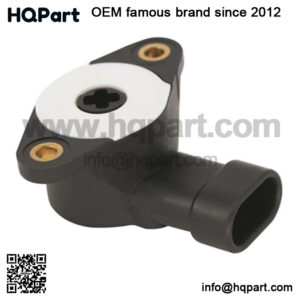Transmission problems
Vehicle speed information relayed by the VSS is used by the transmission control module (TCM) or powertrain control module (PCM) to determine shift timing. Therefore, a failing speed sensor will have a direct impact on automatic transmission operation.
One of the most common signs of a bad speed sensor is abnormal automatic transmission operation. If the VSS is faulty, the transmission may exhibit symptoms such as delayed shifts, hard shifts, and limited gear operation.
Erratic speedometer readings
Many vehicles use the VSS as a primary input for speedometer operation, which means a malfunctioning VSS can cause the speedometer to produce an erratic reading—or no reading at all.
Your vehicle will continue to run without a working speedometer. However, not knowing how fast you’re going will make it difficult to drive safely.
Inability to engage cruise control
Typically, your vehicle’s cruise control will automatically be disabled by the PCM as soon as it fails to receive information from the VSS. This is because the system requires the sensor’s data in order to keep your car running at a constant speed.
Lack of torque converter clutch application
The torque converter clutch is activated at a pre-programmed speed. Without accurate information from the vehicle speed sensors, the transmission torque converter will be unable to apply the clutch and form a mechanical link between the engine and transmission.
This can cause slipping, reduced fuel economy, and an overheated transmission.
Check Engine Light is triggered
Your vehicle’s check engine light can be triggered by the PCM for a myriad of reasons—one of which is a faulty VSS. You’ll need to connect your vehicle to an OBD-II scan tool to confirm whether the error code is pointing to a VSS malfunction.
Other warning lights such as those for the ABS and traction control systems may also appear on the dashboard.
What Causes the Speed Sensor To Fail?
An internal electrical fault in the speed sensor
A speed sensor that is damaged internally can result in an abnormal output signal or no signal at all. Typically, the sensor can be tested with a digital voltmeter or oscilloscope.
Seek the help of a trusted mechanic if you suspect that you have a faulty VSS so it can be tested—and replaced if needed.
Damage on the sensor itself
It’s possible for the speed sensor to get damaged or cracked. Also, the plastic portion of the sensor can become brittle after prolonged exposure to the elements.
The magnetic portion of the sensor may also become worn and damaged over time.
Poor vehicle maintenance
Failing to follow your vehicle maintenance schedule can increase the risk of speed sensor failure. This device will not be able to produce correct readings if the magnetic pickup and/or toothed wheel become heavily covered in gunk, particularly old transmission fluid contaminants.
“Keyword”
“how to bypass speed sensor on golf cart”
“golf cart speed sensor location”
“golf cart speed sensor symptoms”

